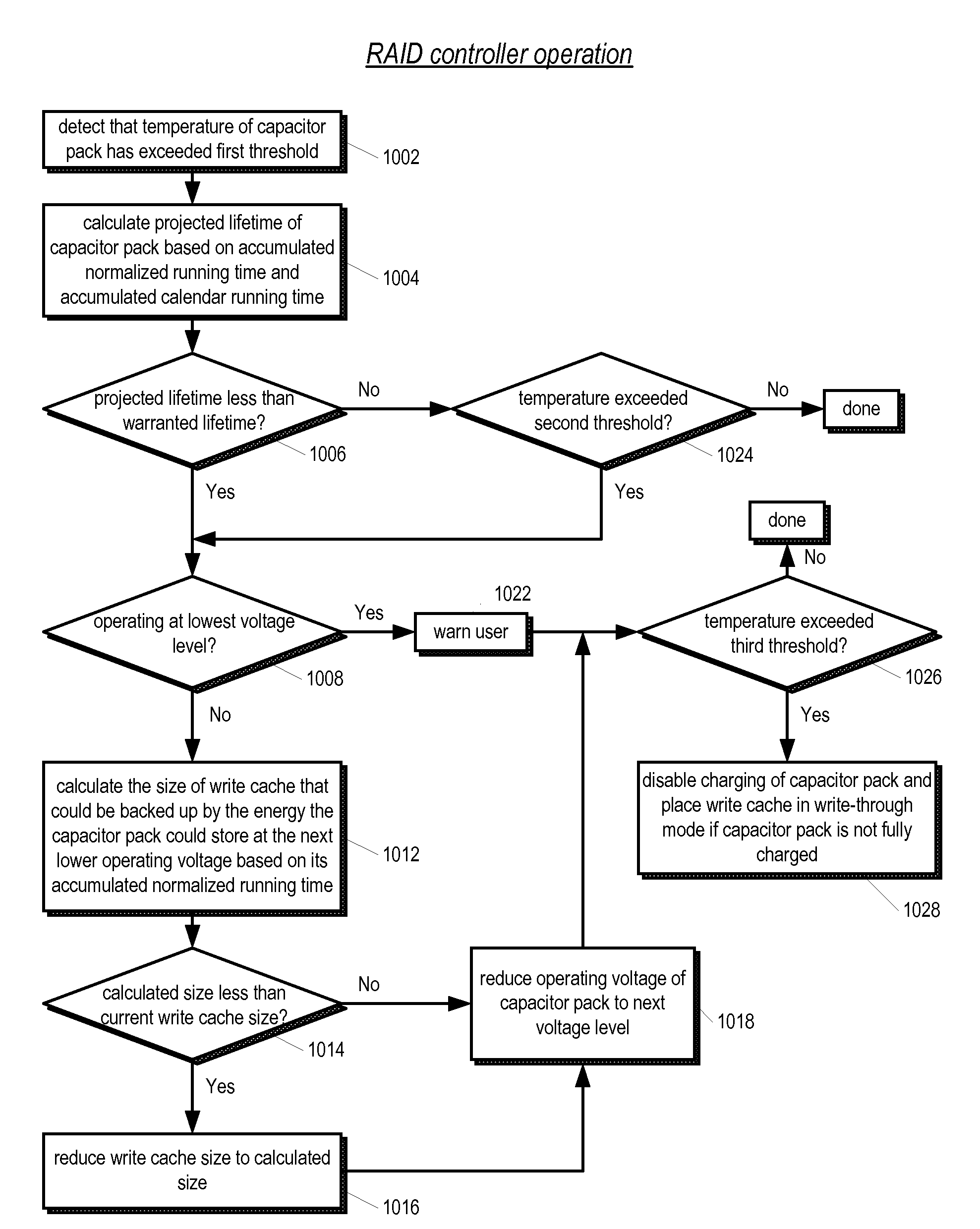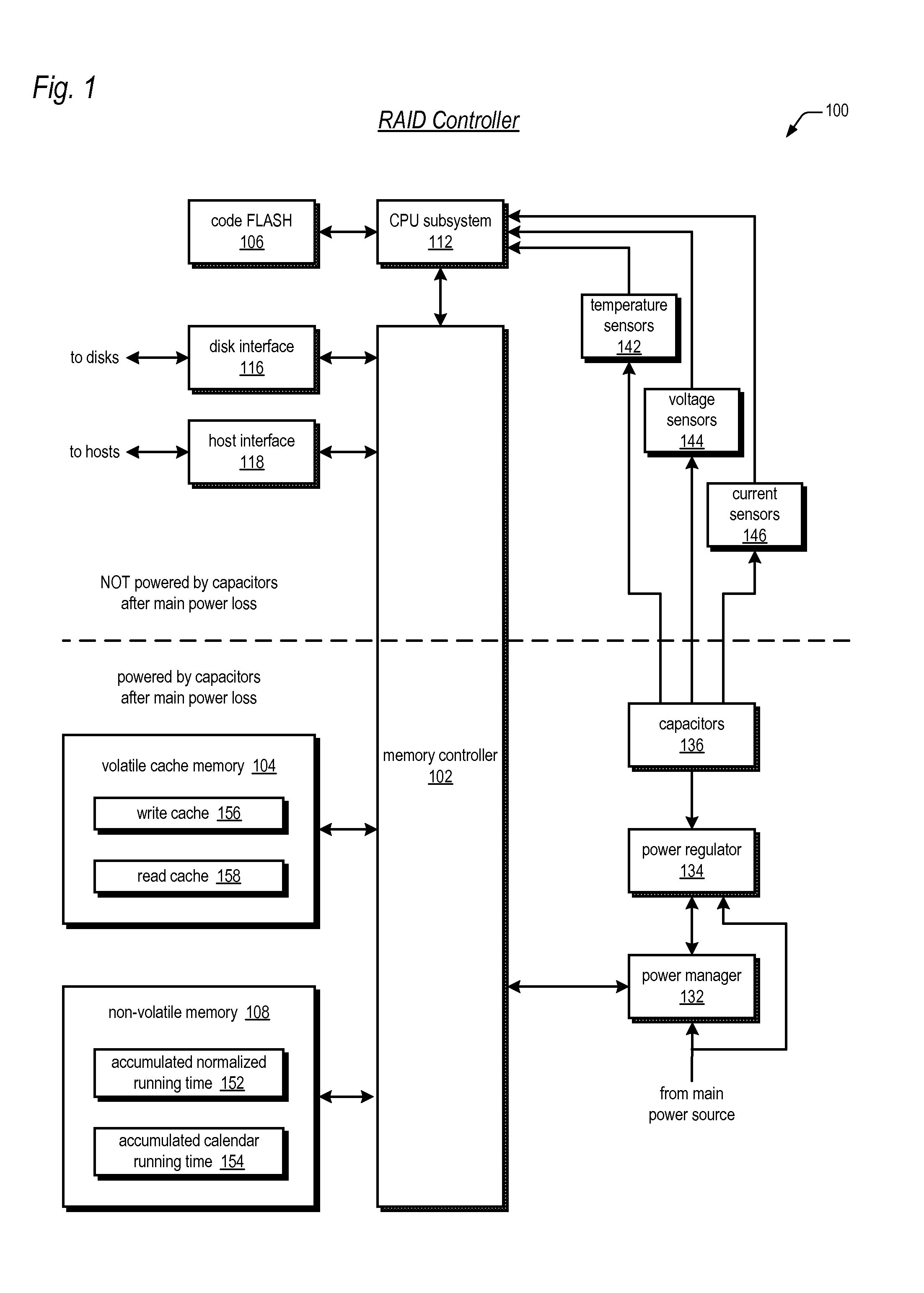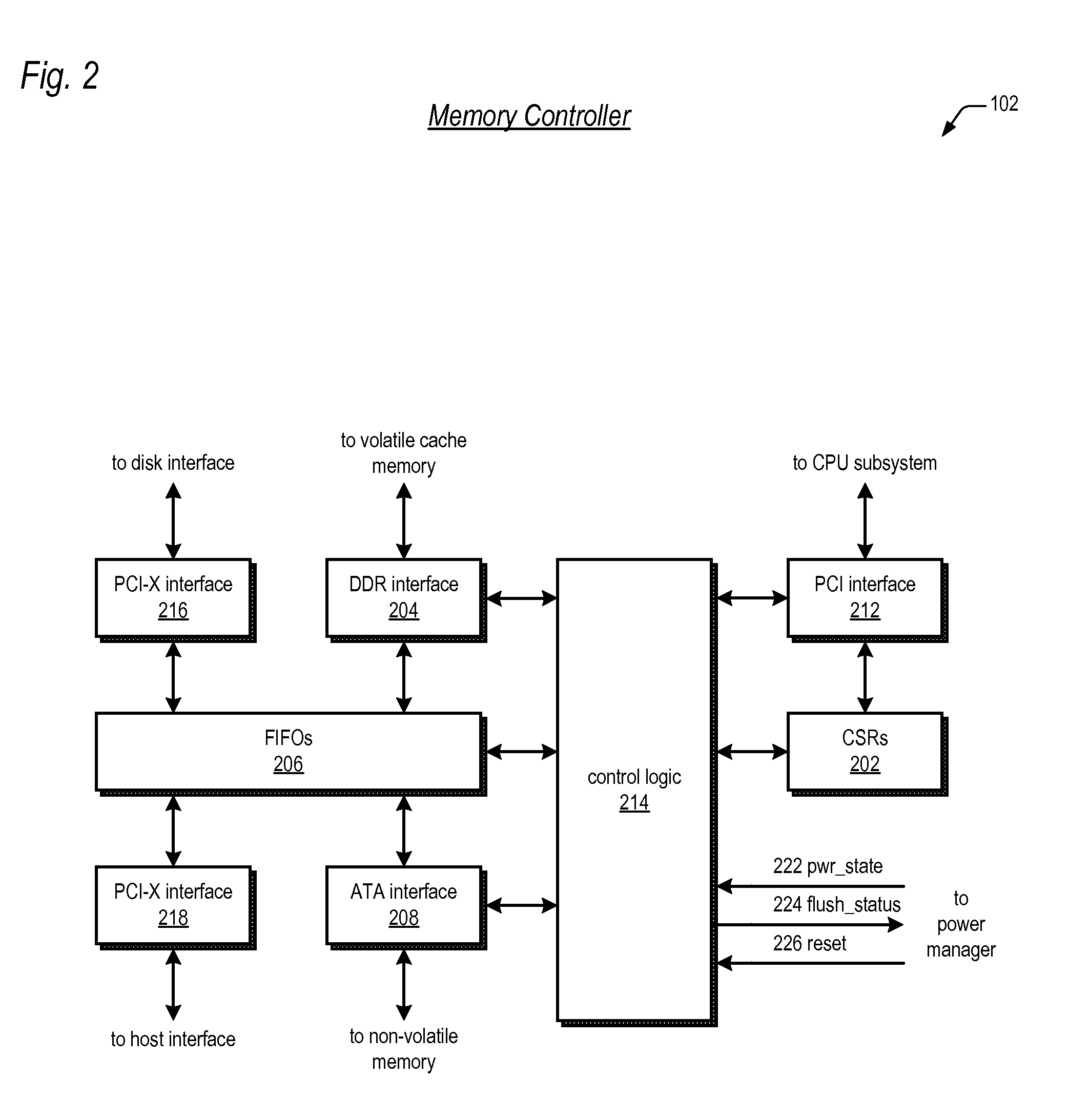Dynamic write cache size adjustment in raid controller with capacitor backup energy source
a capacitor and backup energy source technology, applied in the field of dynamic write cache size adjustment in raid controllers with capacitor backup energy sources, can solve the problems of reducing the likelihood of user data loss, system vulnerability to data loss, and even longer write latency of raid controllers than non-raid controllers. achieve the effect of improving the data availability of write cache storage controllers and reducing volatile write caches
- Summary
- Abstract
- Description
- Claims
- Application Information
AI Technical Summary
Benefits of technology
Problems solved by technology
Method used
Image
Examples
Embodiment Construction
[0036]Referring now to FIG. 1, a block diagram illustrating a RAID controller 100 according to the present invention is shown. In one embodiment, the RAID controller 100 may be one of a pair of active-active redundant fault-tolerant RAID controllers for providing high data availability. In the event of a failure of one RAID controller 100, such as the failure to flush posted-write data from volatile memory to non-volatile memory as described herein, the system may failover to the other RAID controller 100. The RAID controller 100 includes one or more capacitors for supplying power to selected portions of the RAID controller 100 circuits during the loss of main power for enabling a memory controller thereof to quickly and efficiently flush the posted-write data from a cache memory to a non-volatile memory. Advantageously, the RAID controller 100 periodically samples the temperature and voltage of the capacitors and adaptively calculates an effective age of the capacitors using lifeti...
PUM
 Login to View More
Login to View More Abstract
Description
Claims
Application Information
 Login to View More
Login to View More - R&D
- Intellectual Property
- Life Sciences
- Materials
- Tech Scout
- Unparalleled Data Quality
- Higher Quality Content
- 60% Fewer Hallucinations
Browse by: Latest US Patents, China's latest patents, Technical Efficacy Thesaurus, Application Domain, Technology Topic, Popular Technical Reports.
© 2025 PatSnap. All rights reserved.Legal|Privacy policy|Modern Slavery Act Transparency Statement|Sitemap|About US| Contact US: help@patsnap.com



